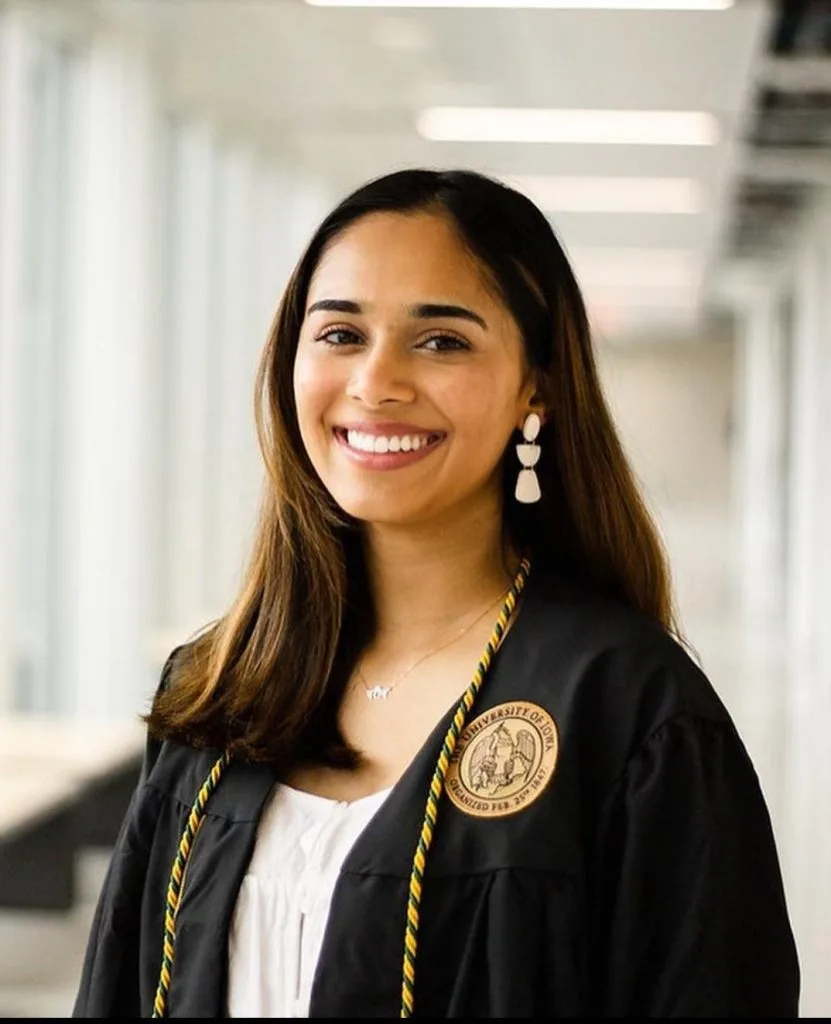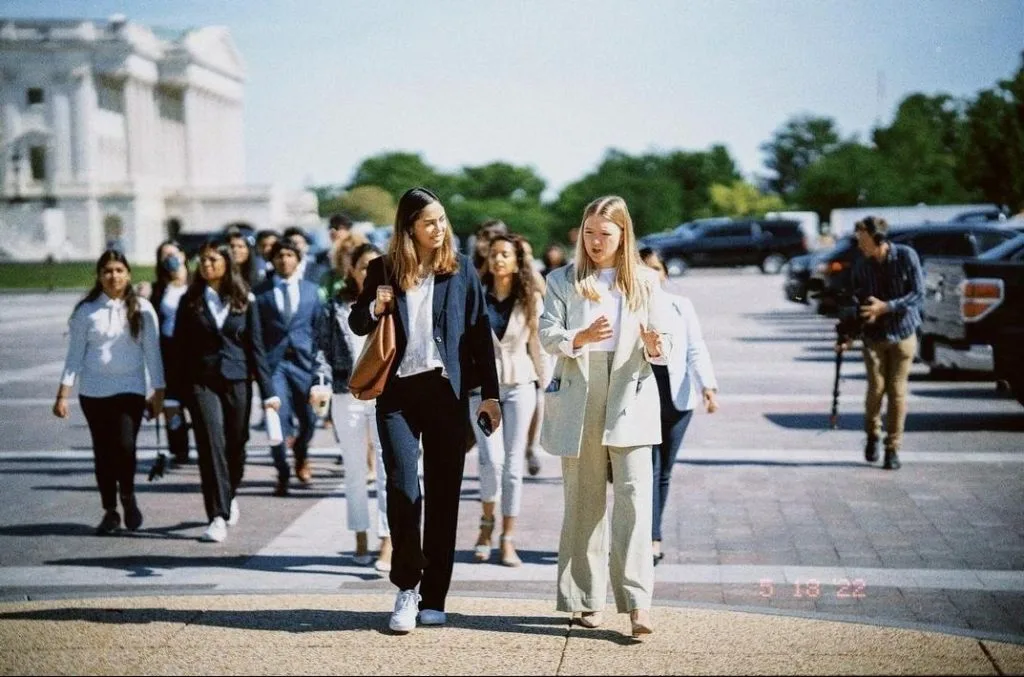(October 10, 2024) As her twenty-first birthday grew closer, Pareen Mhatre began to panic. An accomplished STEM student at the University of Iowa, Pareen would call her parents, who also live in Iowa City and cry, overcome with worry about her future in the US. This was back in 2021 and Pareen’s life has since been an unending flurry of visa applications and waiting on tenterhooks for the next portion of her stay to be approved by authorities.
This sounds like the life of any foreign student in the US, and the anticipated stresses of going from an F1 (student) visa to a coveted H-1B. Pareen, however, has lived in the US since she was four months old. A midwesterner through and through, Pareen is one of around 200,000 youngsters all facing self-deportation, and being compelled to return to countries of origin that are completely alien to them. This is the story of America’s Documented Dreamers – the children of immigrant who have entered the country on long term visas like H4, L2, E2, who fell through the cracks in a work visa policy that has not yet taken them into account. So, instead of landing the internships and living her best lifeon campus, Pareen is familiarising herself with the proverbial alphabet soup of visa categories to be able to stay on the country she calls home.

Long way home
“I have been in constant fear for the past five years,” Pareen said at the House Judiciary Hearing in 2021. “Over the past 21 years my parents and I have received help and love from this country but our hearts break when we think of my immigration status.” Although the US is the only place she has ever really called home, she says, “I am treated as a foreign student, on par with newly-arrived international students.” After the ‘ageing out’ in April 2021, she applied for the F1 student visa and spent the interim in the States on a B2 visitor visa, which didn’t allow her to take classes or apply for internships.
Every year, the visa policy decides the fates of thousands, who are compelled to self-deport or if they stay on, do so as illegals. Pareen Mhatre is among a handful who have found an avenue to spread awareness and has also testified before Congress at a House Judiciary Hearing, hoping to shed more light on the size and scale of the problem. It’s a forgotten part of the American Dream, where immigrants make their way to the US to build a better life for themselves, but don’t foresee the impact it will have on their children. She and her family discovered Improve The Dream, an organisation started by Canadian Dip Patel, which acts as a platform for children of documented immigrants. Pareen has not allowed the fear of self-deportation to overwhelm her – she is a strong voice for Documented Dreamers, has testified before the US Senate, been named in Teen Vogue’s 21 Under 21 and made sure that her cause resonates among the political class.
A Midwesterner through and through
“What I know of India is purely from trips to see my grandparents. This is my home. I’m a midwesterner,” she said, during her address.” Pareen was four months old when she first arrived in Cincinnati, Ohio, with her parents. Shortly after, they moved to Iowa, where they studied at the University of Iowa on student visas. Pareen’s mother, Sampada Mhatre, holds master’s degrees in German, educaitonal psychology and business administration and works as an instructional services manager at the UI College of Nursing. Her father, Girish Mhatre, has a master’s in computer science and is a senior application developer for UI Hospitals. Their visa processes were handled by the University itself and Pareen was listed as a dependent on her mum’s visa.


Growing up, Pareen was aware that wasn’t a citizen, but didn’t really understand what that meant until the time came. Iowa City was home in every way – “I learned how to ride a bike about a mile from my current home. I have attended kindergarten through high school in the Iowa City Community School District,” she told the Des Moines Register. She learned to read at the Iowa City Public Library and when she grew older, became a volunteer there. She also volunteered at the University of Iowa Hospitals and Clinics and witnessed first hand the “top-tier care” that staff were providing. She represented Iowa City West High at STEM and student journalism competitions at the national and state levels, bringing home several individual and team awards. At school, she served as the newspaper’s online managing editor and photo editor and as a member of the student senate for three years, as well as on the principal’s advisory committee. Now, Pareen studies biomedical engineering at UI, a sector that is full of opportunities for great social change through the integration of technology and healthcare.
The Documented Dreamers
Interestingly, she is not alone even in this respect. A large number of Documented Dreamers are high performers and STEM graduates, many from Asia, born to parents who living in the US on work visas. “At least 10,000 Documented Dreamers are ordered to self-deport every year,” says Dip Patel, founder of Improve The Dream. Pareen found a ray of hope when she discovered Improve the Dream, and has become an integral part of the platform since. And all the while, the Global Indian is fighting for the right to live in the country she has always called home.
As her 21st birthday approached, Pareen applied for an F-1 student visa, along with a B-2, which is ‘bridge’ visa for visitors. The latter wouldn’t allow her to either study or work, but at least it would keep her there until her student visa arrived. And surprisingly, actually having grown up in the US could hinder her case for a student visa, because she is unable to show ties to her country of birth. Her F-1 visa did come through and she will remain in the US until she graduates, after which she will join the long queue of immigrants from around the globe waiting for a H-1B.
Stuck in limbo


The family did get in line for a Green Card in 2012, which also involves a decades-long wait that might not ever end. The wait for Indian nationals is anywhere between 39 and 89 years due to visa caps and backogs. The process has left Pareen struggling – “I have been diagnosed with clinical depression and Generalised Anxiety Disorder,” she said, in her hearing.
High-performing children of documented immigrants are the only ones stuck in this limbo. Back in 2014, President Obama establised DACA, or Deferred Action for Childhood Arrivals. However, this was designed only to help individuals who entered the US as minors without legal permission. They are given temporary protection from deportation and can work legally in the US for two years with the possibility of renewal. However, DACA failed to account for children of legal immigrants. As Pareen’s mother, Sampada, pointed out in an interview, “We did everything right, and yet here we are.”
In 2021, Pareen, who was in Washington to testify at the House Judiciary Committee hearing, meet with US Representative Miller-Meeks, an Ottumwa Republican. The efforts of activists like Dip Patel and Pareen Mhatre, along with political support, have resulted in the proposed American Dream and Promise Act of 2023, which will give people like Pareen some relief. It would allow people who moved to the US as dependents who have lived in the US for 10 years and graduated from a higher education institution, to obtain permanent residency.
Hope on the horizon
But all is not lost. The efforts of activists like Dip Patel and Pareen Mhatre, along with political support, have resulted in the proposed American Dream and Promise Act of 2023, which will give people like Pareen some relief. Pareen Mhatre has become a symbol of hope and resilience for immigrants in the US, who are constantly facing the threat of their families being torn apart after decades spent contributing to the country. She has channeled her anxiety into advocacy and continues to excel both as a student and as a mamber of her community.





